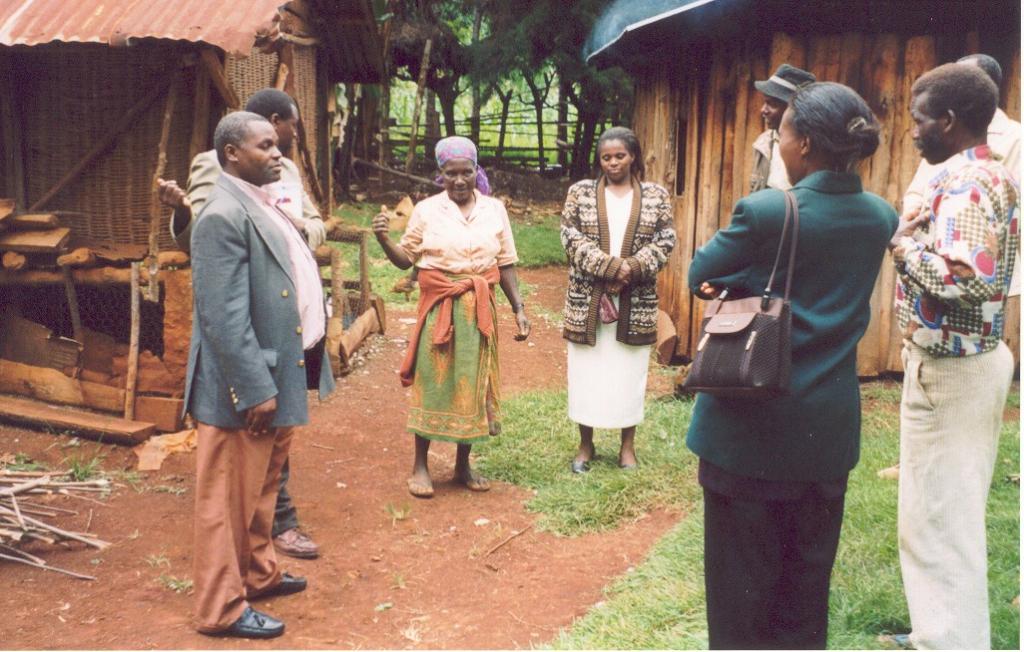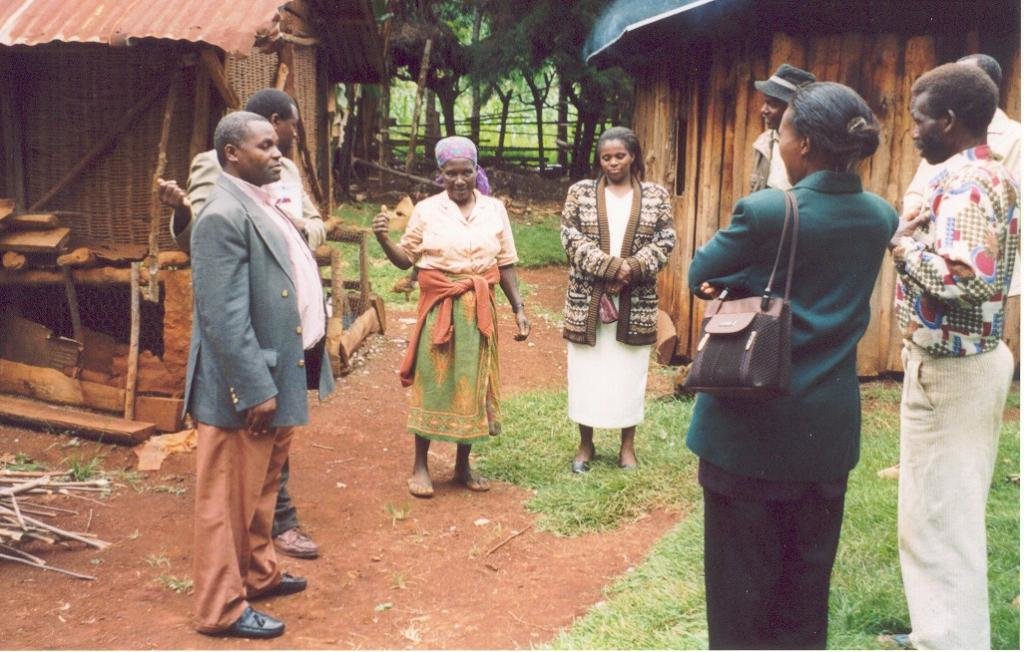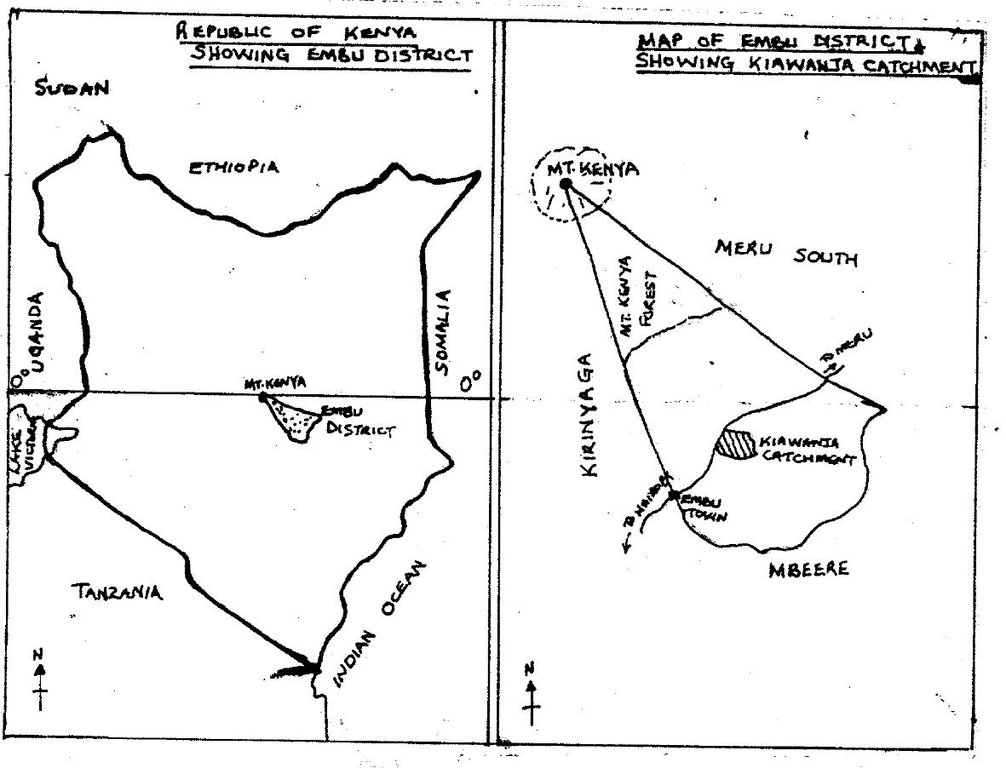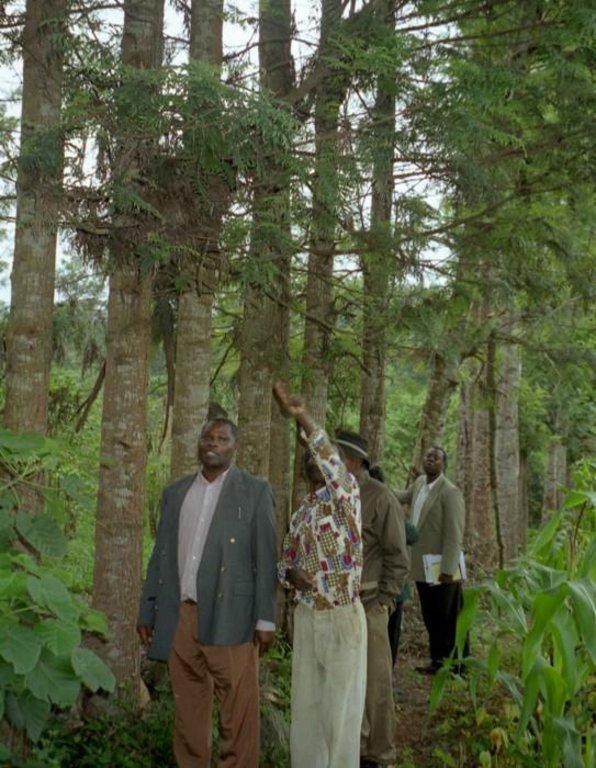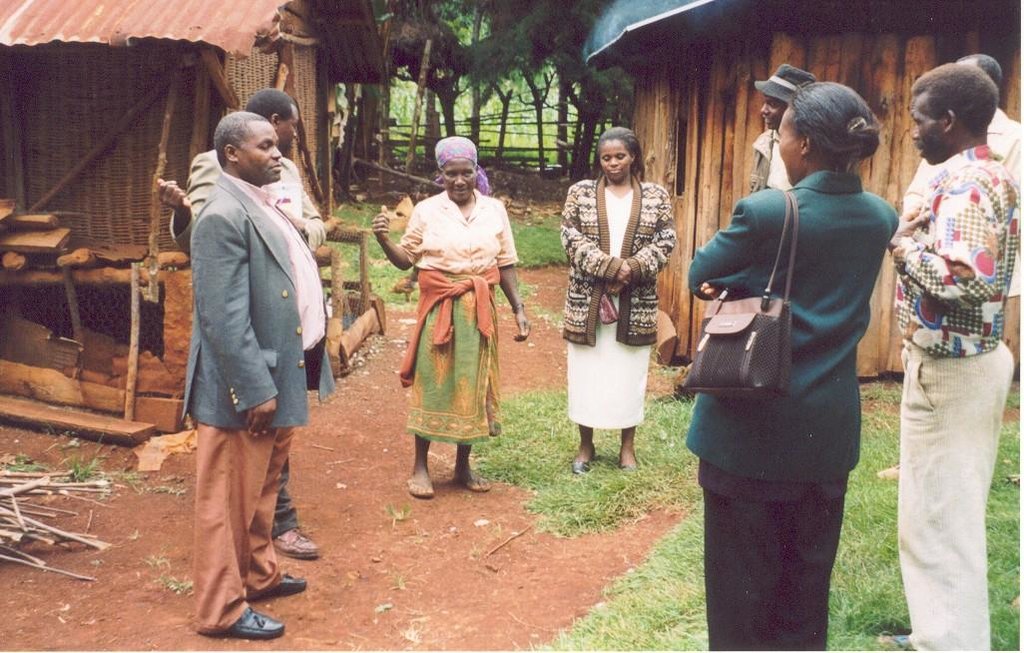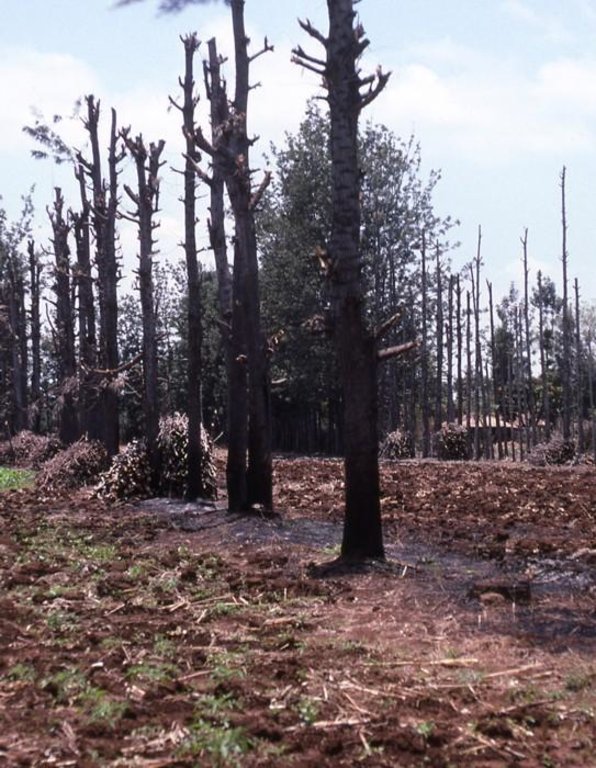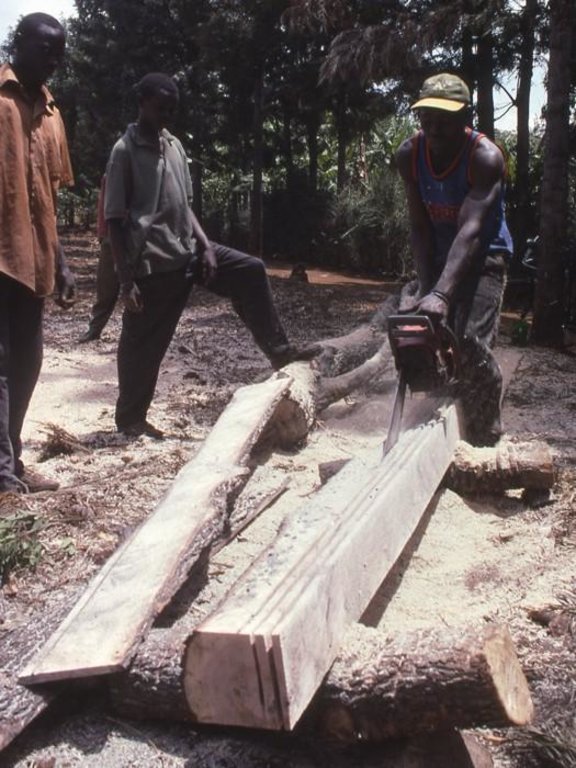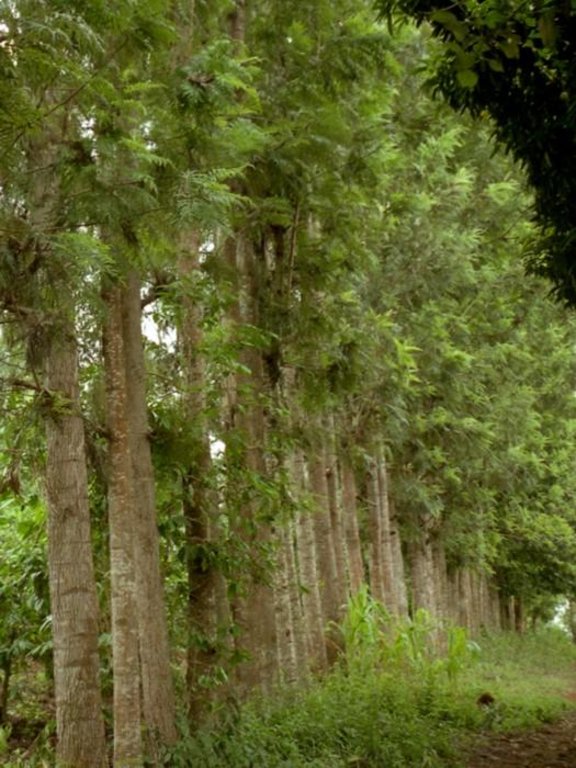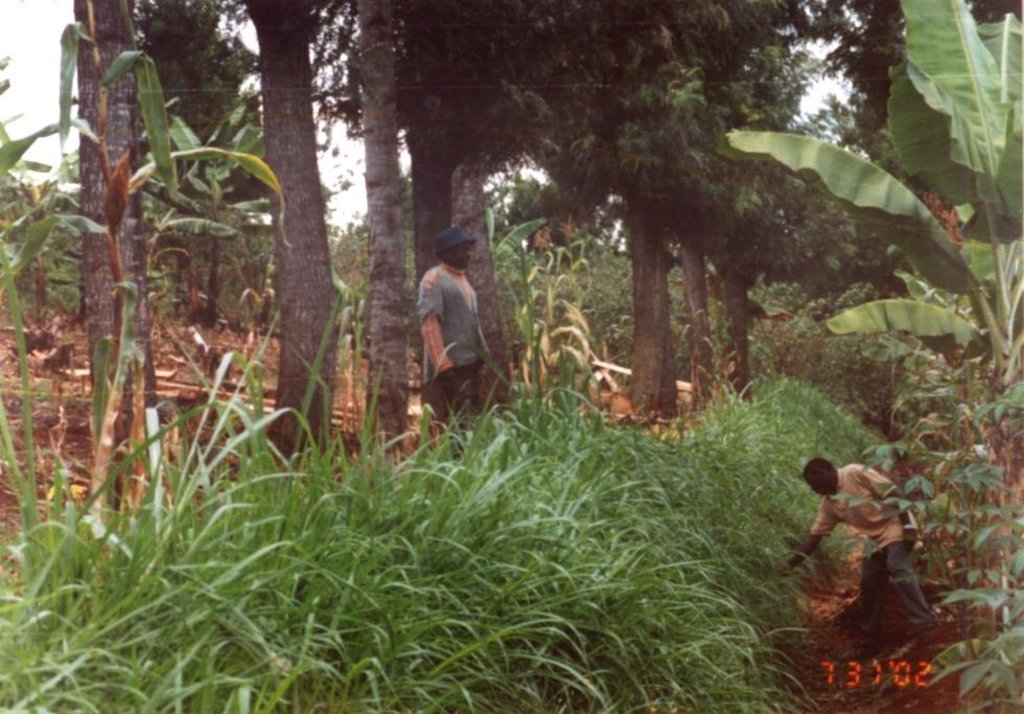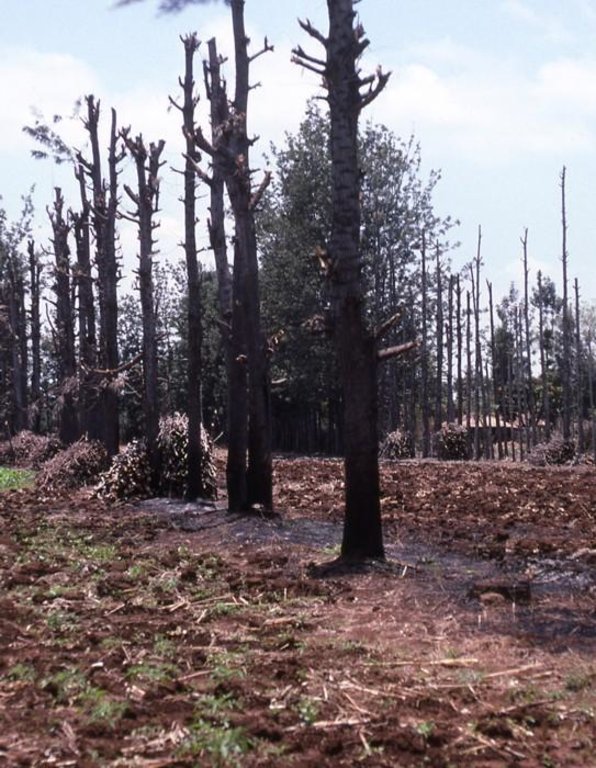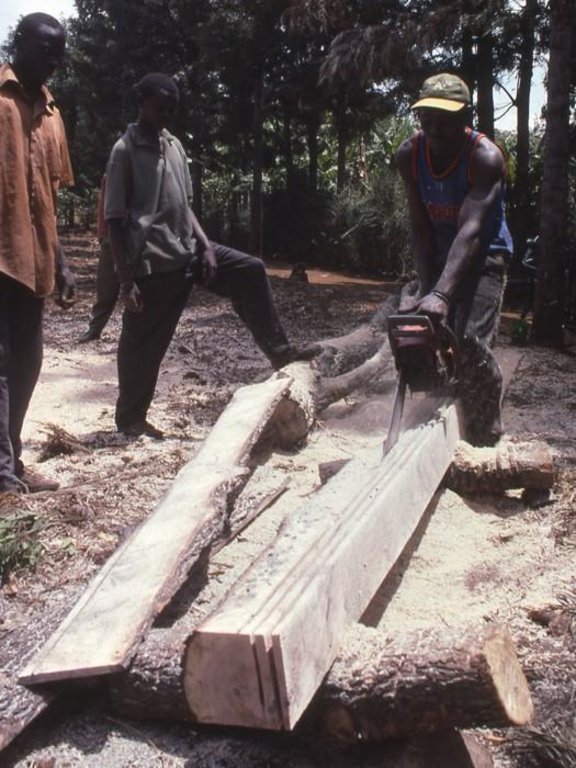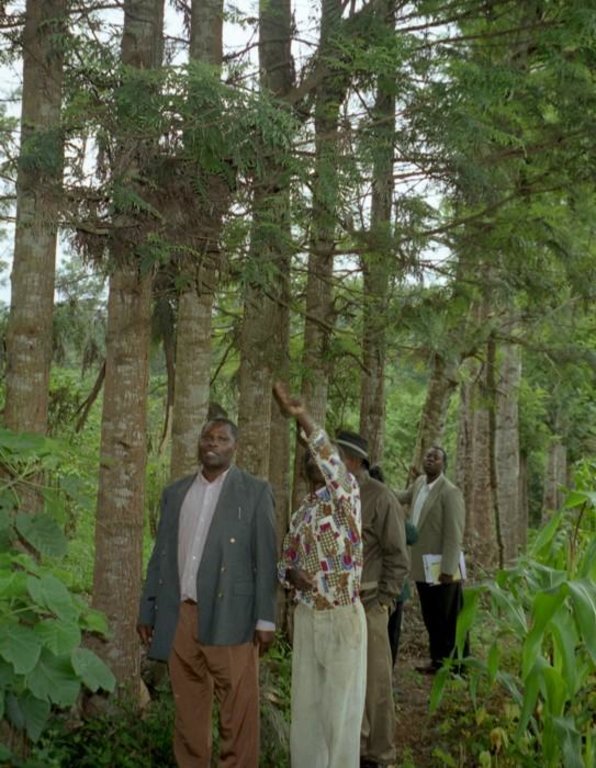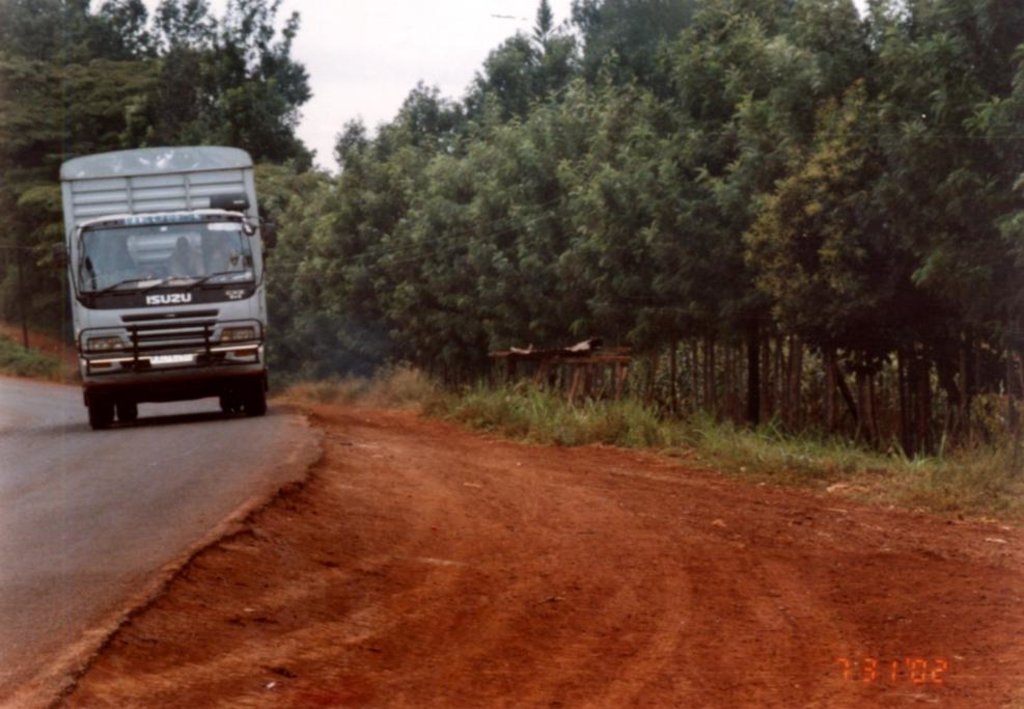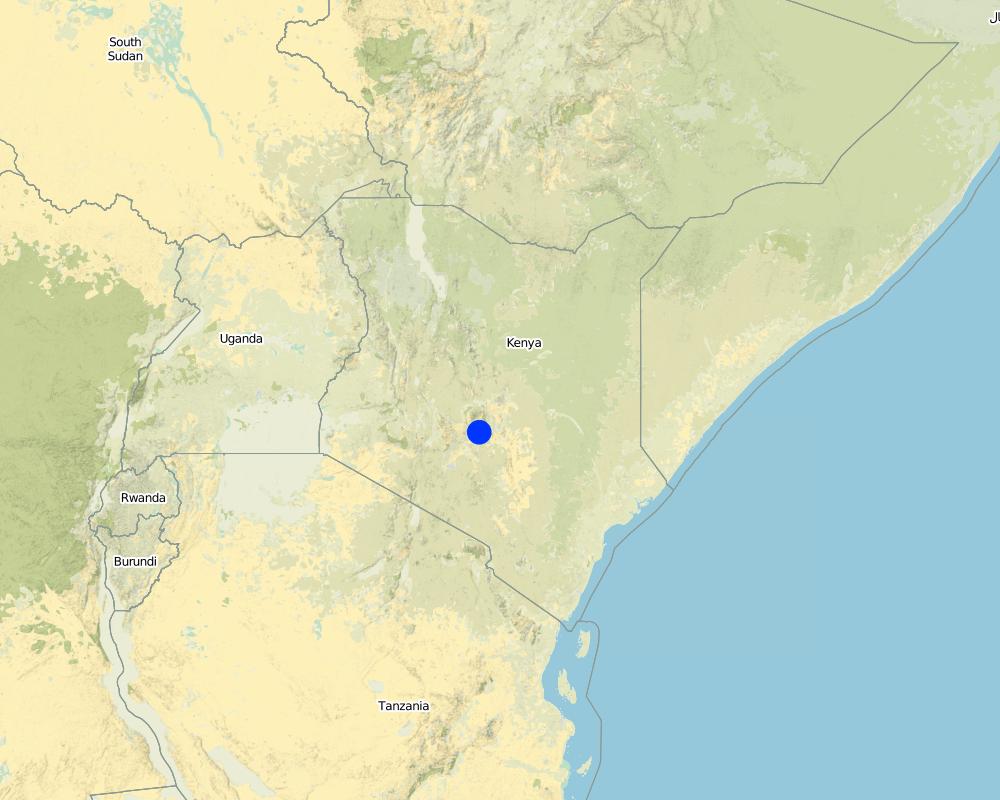Spontaneous spread [Kenya]
- Creation:
- Update:
- Compiler: Ceris A. Jones
- Editor: –
- Reviewers: Fabian Ottiger, Deborah Niggli
approaches_2627 - Kenya
View sections
Expand all Collapse all1. General information
1.2 Contact details of resource persons and institutions involved in the assessment and documentation of the Approach
SLM specialist:
Mwaniki JM
mwanikijm2002@yahoo.com
Ministry of Agriculture/Soil and Water Conservation Branch
Embu
Kenya
SLM specialist:
Name of project which facilitated the documentation/ evaluation of the Approach (if relevant)
Book project: where the land is greener - Case Studies and Analysis of Soil and Water Conservation Initiatives Worldwide (where the land is greener)Name of the institution(s) which facilitated the documentation/ evaluation of the Approach (if relevant)
Ministry of Agriculture, Livestock and Fisheries (MoA) - KenyaName of the institution(s) which facilitated the documentation/ evaluation of the Approach (if relevant)
Swiss Agency for Development and Cooperation (DEZA / COSUDE / DDC / SDC) - SwitzerlandName of the institution(s) which facilitated the documentation/ evaluation of the Approach (if relevant)
Agronomica - United Kingdom1.3 Conditions regarding the use of data documented through WOCAT
The compiler and key resource person(s) accept the conditions regarding the use of data documented through WOCAT:
Yes
1.4 Reference(s) to Questionnaire(s) on SLM Technologies
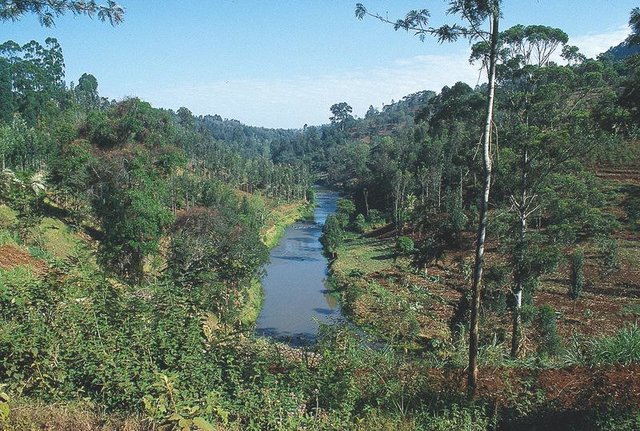
Grevillea agroforestry system [Kenya]
Multipurpose Grevillea robusta trees planted along farm boundaries, on terrace risers and occasionally scattered in cropland.
- Compiler: Ceris A. Jones
2. Description of the SLM Approach
2.1 Short description of the Approach
Spontaneous land users' initiative to meet household needs - especially firewood and timber - through planting Grevillea robusta trees as part of an agroforestry system.
2.2 Detailed description of the Approach
Detailed description of the Approach:
Aims / objectives: Grevillea robusta is a well-known shade tree, used in coffee and tea plantations in East Africa since the early part of the 20th century. While it originates from Australia, it was brought over from India and Sri Lanka by European settlers. Smallholder farmers in the highlands of Kenya noted that there was little or no competition between grevillea and neighbouring crops. Indeed this is one of the reasons it was so successful as a shade tree amongst plantation crops. Responding to the local lack of timber and firewood, due to the expansion of farmland into previously forested areas, smallholders took to planting grevillea, especially as a boundary tree, from the 1970s onwards. While the immediate effect of grevillea planting was to satisfy those needs for wood, the tree also helps in various ways to conserve land and improve the soil. This too was probably a reason for its spontaneous spread.
Methods: Because planting of grevillea requires few resources other than tools, even poor land users can readily adopt the technology. Although seedlings can be bought from local Government, NGO or private nurseries, it is also possible to collect ‘wildings’ (naturally generated seedlings) and plant these at minimal cost. The management of grevillea trees, once established, is important to their performance in the field, but the skills of thinning, and pollarding (pruning side branches for use) can be easily learned from neighbours. The success of the spontaneous spread of grevillea, basically through farmer-to-farmer exchange of knowledge, demonstrates that tree planting is not something that has always to be ‘pushed’ by outside agencies. Where smallholders perceive a need for trees and tree products - and an appropriate species is available - they will respond positively. However there is still an important ‘pulling’ role to be played by the Ministry of Agriculture’s extension agents and NGOs, especially through support for tree nurseries and for training to establish private tree nurseries.
2.3 Photos of the Approach
2.5 Country/ region/ locations where the Approach has been applied
Country:
Kenya
Region/ State/ Province:
Eastern Province
Map
×2.6 Dates of initiation and termination of the Approach
Indicate year of initiation:
1971
2.7 Type of Approach
- traditional/ indigenous
2.8 Main aims/ objectives of the Approach
The Approach focused mainly on other activities than SLM (Fencing, farm boundary marking, ornamental value, fuel wood supply, building materials provision)
- improve availability of tree products (fuelwood and wood for construction). - demarcate own land easily and cheaply (after land registration). - reduce land degradation. - increase land productivity. - improve household income
The SLM Approach addressed the following problems: - shortage of fuelwood and building materials, environmental degradation. - need for farm boundary marking. - lack of simple, widely applicable agroforestry recommendations
2.9 Conditions enabling or hindering implementation of the Technology/ Technologies applied under the Approach
social/ cultural/ religious norms and values
- hindering
Gender bias - women not expected to plant trees
Treatment through the SLM Approach: Although not directly related to this approach, intensive campaigns were conducted (by government and NGO's) to encourage gender balance with respect to tree planting
availability/ access to financial resources and services
- hindering
Shortage of tree seedlings and sourced from long distance
Treatment through the SLM Approach: Setting up of individual on-farm tree nurseries and collection of wildlings
legal framework (land tenure, land and water use rights)
- enabling
The existing land ownership, land use rights / water rights greatly helped the approach implementation: Private land ownership has given farmers confidence to invest the land, and has also been a direct stimulus through the need to mark plot boundaries
knowledge about SLM, access to technical support
- hindering
Shortage of tree seedlings and sourced from long distance
Treatment through the SLM Approach: Setting up of individual on-farm tree nurseries and collection of wildlings.
3. Participation and roles of stakeholders involved
3.1 Stakeholders involved in the Approach and their roles
- local land users/ local communities
Working land users were mainly men (It was traditionally the role of men to plant trees. This is however changing ie other groups - women and youth - are now planting trees.)
Land users identified, purchased and planted their species of choice. However, at the same time, Grevillea seedlings were available at institutional (Ministry of Environment and Natural Resources) nurseries.
Traditionally men purchased, collected and planted trees. The men had greater access to and control of decisions on planting. The technology requires few resources, so that even poor land users have easily been able to decide to buy seedlings or collect wildlings and plant
3.2 Involvement of local land users/ local communities in the different phases of the Approach
| Involvement of local land users/ local communities | Specify who was involved and describe activities | |
|---|---|---|
| initiation/ motivation | self-mobilization | innovative individuals planting grevillea |
| planning | self-mobilization | informal, individual plans |
| implementation | self-mobilization | |
| monitoring/ evaluation | passive | ad hoc observations by MoA; |
| Research | none | no activities |
3.4 Decision-making on the selection of SLM Technology/ Technologies
Specify who decided on the selection of the Technology/ Technologies to be implemented:
- land users alone (self-initiative)
Explain:
Land user-driven initiative by shortages/problems
Decisions on the method of implementing the SLM Technology were made by by land users* alone (self-initiative / bottom-up). The land user decided on when and how to plant the trees.
4. Technical support, capacity building, and knowledge management
4.1 Capacity building/ training
Was training provided to land users/ other stakeholders?
Yes
Subjects covered:
Some demonstrations of benefits of tree planting by Government at provincial agricultural shows.
4.2 Advisory service
Do land users have access to an advisory service?
Yes
Specify whether advisory service is provided:
- on land users' fields
Describe/ comments:
Key elements: Informal farmer-to-farmer exchange of ideas and skills. Additionally, on national tree planting days, the government hands out seedlings. Grevillea planting has been encouraged during national campaigns (involving the Ministry of Agriculture, the Ministry of Environment and Natural Resources, and NGOs) to encourage soil and w; 1) Advisory service was carried out through: other: individual land users 2) Advisory service was carried out through: other: individual land users
Advisory service is quite adequate to ensure the continuation of land conservation activities; There is collaboration between Government extension service and KARI (Kenya Agricultural Research Institute) to further promote the technology
4.3 Institution strengthening (organizational development)
Have institutions been established or strengthened through the Approach?
- no
4.4 Monitoring and evaluation
Is monitoring and evaluation part of the Approach?
Yes
Comments:
technical aspects were ad hoc
economic / production aspects were ad hoc
area treated aspects were ad hoc monitored by 0 through observations; indicators: None
There were no changes in the Approach as a result of monitoring and evaluation: None
5. Financing and external material support
5.1 Annual budget for the SLM component of the Approach
Comments (e.g. main sources of funding/ major donors):
Approach costs were met by the following donors: government (national - Sponsored national tree planting days): 10.0%; other (Individual land user): 90.0%
5.2 Financial/ material support provided to land users
Did land users receive financial/ material support for implementing the Technology/ Technologies?
No
5.3 Subsidies for specific inputs (including labour)
- agricultural
| Specify which inputs were subsidised | To which extent | Specify subsidies |
|---|---|---|
| seeds | partly financed | Individual land user. However, labour input was minimal |
If labour by land users was a substantial input, was it:
- voluntary
Comments:
Individual land user. However, labour input was minimal
5.4 Credit
Was credit provided under the Approach for SLM activities?
No
6. Impact analysis and concluding statements
6.1 Impacts of the Approach
Did the Approach help land users to implement and maintain SLM Technologies?
- No
- Yes, little
- Yes, moderately
- Yes, greatly
better soil and water management, increase in soil organic matter levels, nutrient pumping and reduced soil erosion.
Did other land users / projects adopt the Approach?
- No
- Yes, little
- Yes, moderately
- Yes, greatly
Other extension programmes are utilising individual initiative as an entry point
6.3 Sustainability of Approach activities
Can the land users sustain what has been implemented through the Approach (without external support)?
- yes
If yes, describe how:
As land users developed this approach they can continue activities without support.
6.4 Strengths/ advantages of the Approach
| Strengths/ advantages/ opportunities in the land user’s view |
|---|
| Strong land user 'ownership' of the approach. |
| Adaptability, flexibilityand simplicity since it is user driven |
| Strengths/ advantages/ opportunities in the compiler’s or other key resource person’s view |
|---|
| Incentives not necessary |
| Valuable lessons from a farmer-driven success for development agencies that promote tree planting and agroforestry systems. |
| Very low inputs (resources) required. However there is still an important 'pulling' role to be played by the Ministry of Agriculture's extension agents and NGOs (How to sustain/ enhance this strength: More support for individual and government tree nurseries.) |
| Self-driven initiative (How to sustain/ enhance this strength: MoA extension staff and land users to encourage other farmers to be self-reliant.) |
6.5 Weaknesses/ disadvantages of the Approach and ways of overcoming them
| Weaknesses/ disadvantages/ risks in the land user’s view | How can they be overcome? |
|---|---|
| Lack of other stakeholders input | Encourage and inform land users on where to seek additional information consultations with SWC extensionists |
| Weaknesses/ disadvantages/ risks in the compiler’s or other key resource person’s view | How can they be overcome? |
|---|---|
| Adoption rates under such approaches depend on the number and efforts of innovators to stimulate others | SWC extensionists (Ministry and NGOs) to undertake more community mobilisation and awareness raising. |
| Approach is dependent on social cohesiveness for dissemination | promote more farmer interaction at community level |
| Poor collaboration and insitutional linkages | Encourage and create forums where stakeholders can share experiences and inform land users about where to seek additional information and assistance. |
7. References and links
7.1 Methods/ sources of information
- field visits, field surveys
- interviews with land users
7.2 References to available publications
Title, author, year, ISBN:
NjiruN.N et al. 1998. PRA report of Kiawanja catchmentSee 'Grevillea agroforestry system' case study (QT KEN16) for technical references
Available from where? Costs?
Nembure district
Links and modules
Expand all Collapse allLinks

Grevillea agroforestry system [Kenya]
Multipurpose Grevillea robusta trees planted along farm boundaries, on terrace risers and occasionally scattered in cropland.
- Compiler: Ceris A. Jones
Modules
No modules


